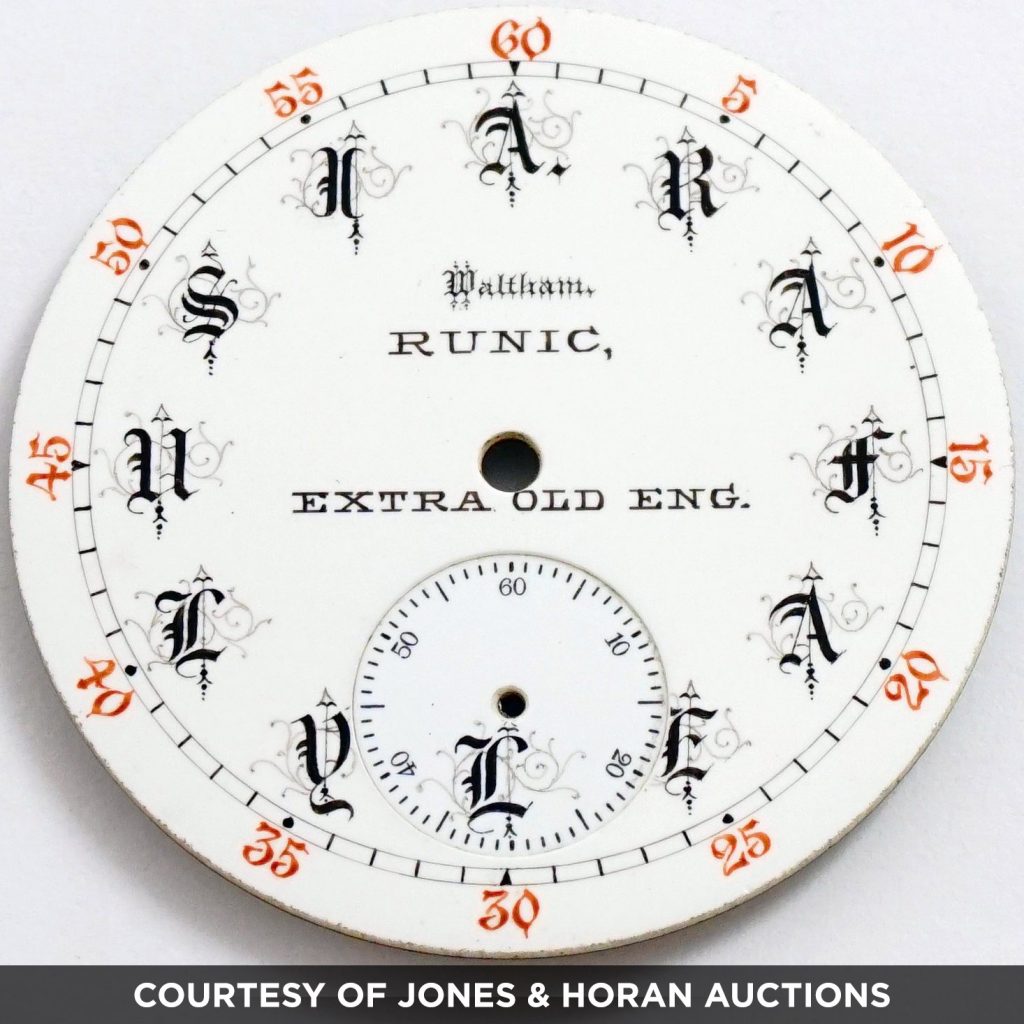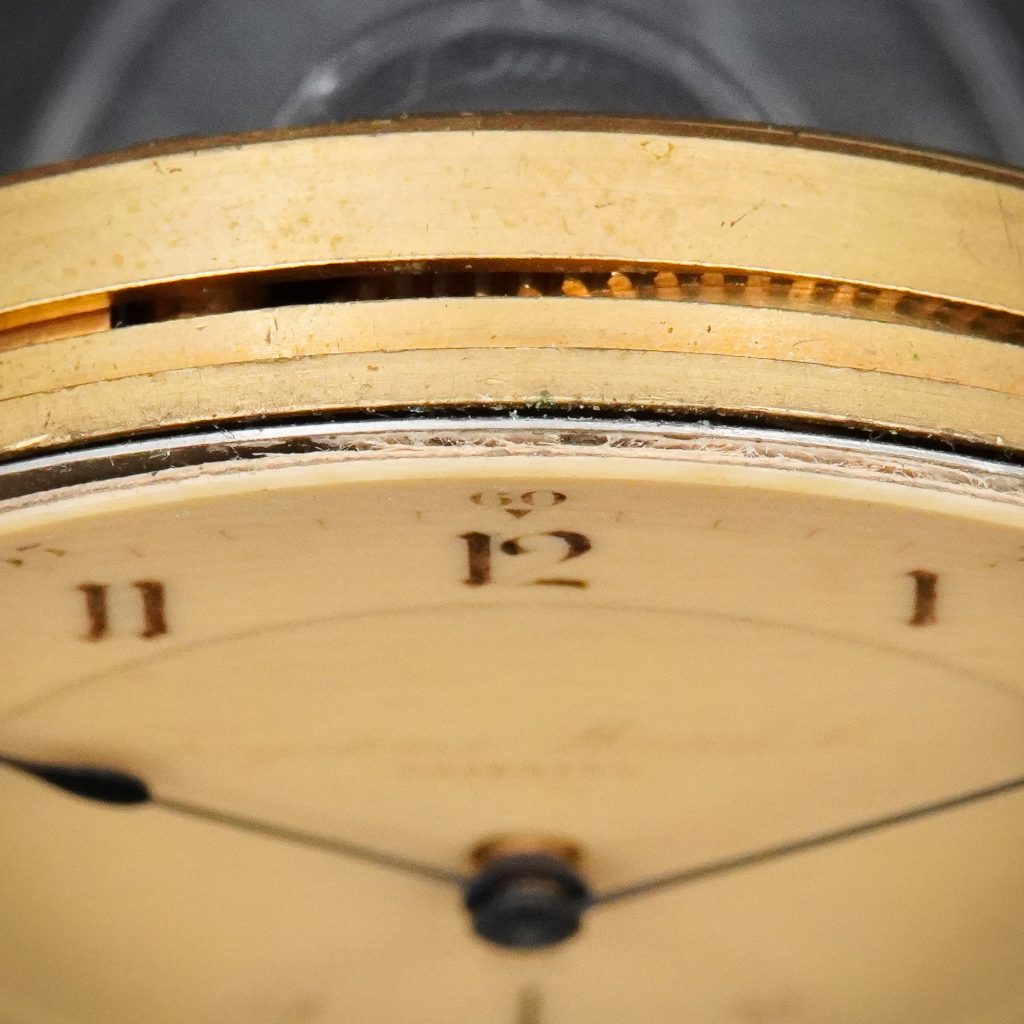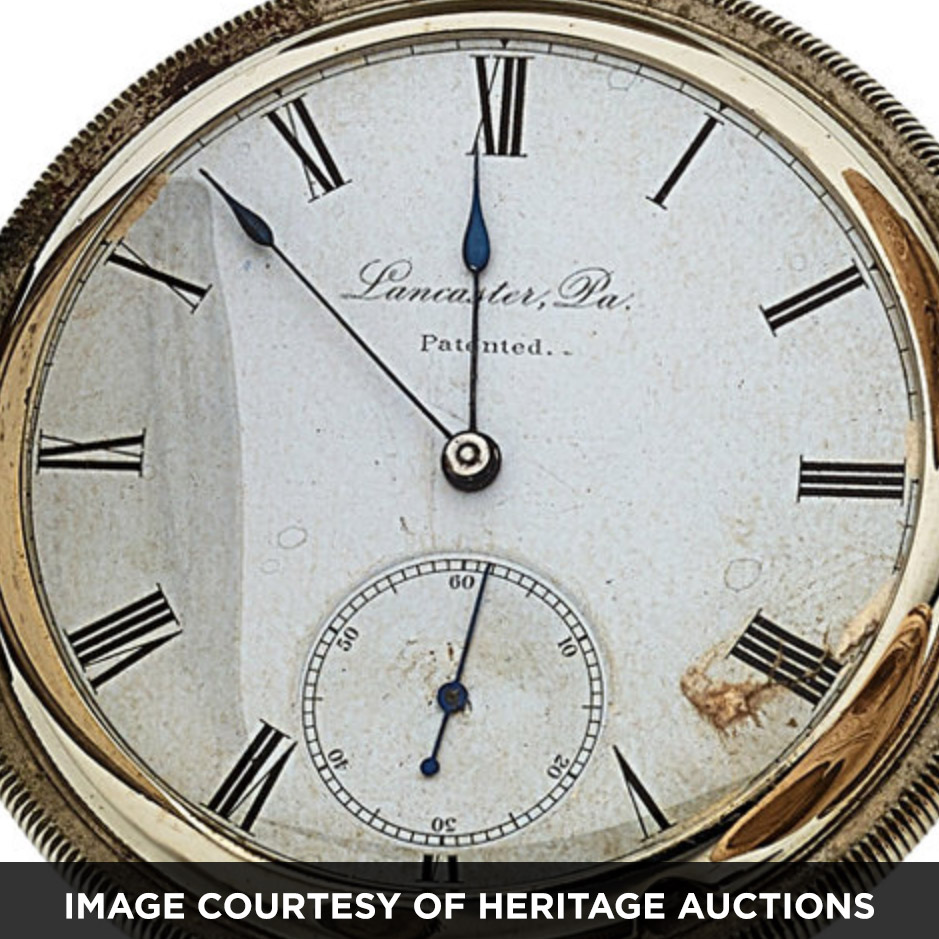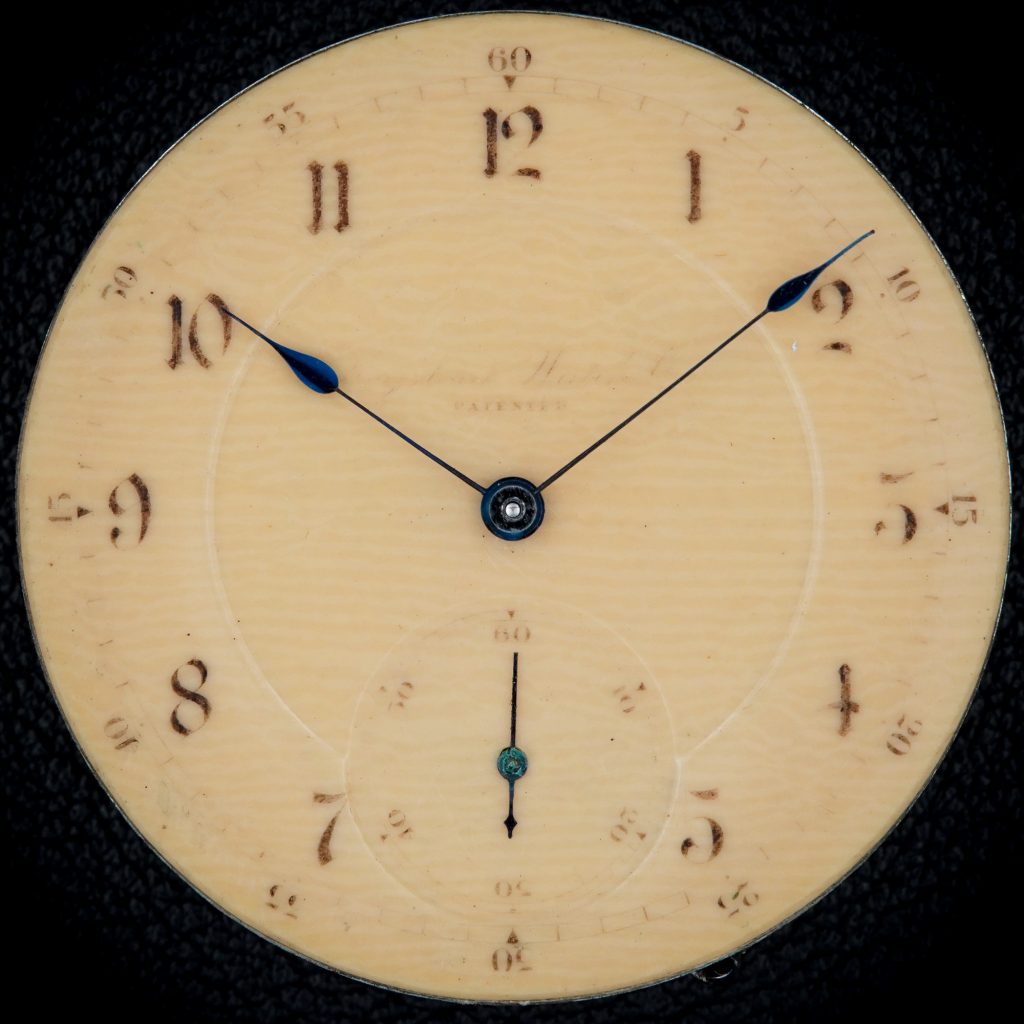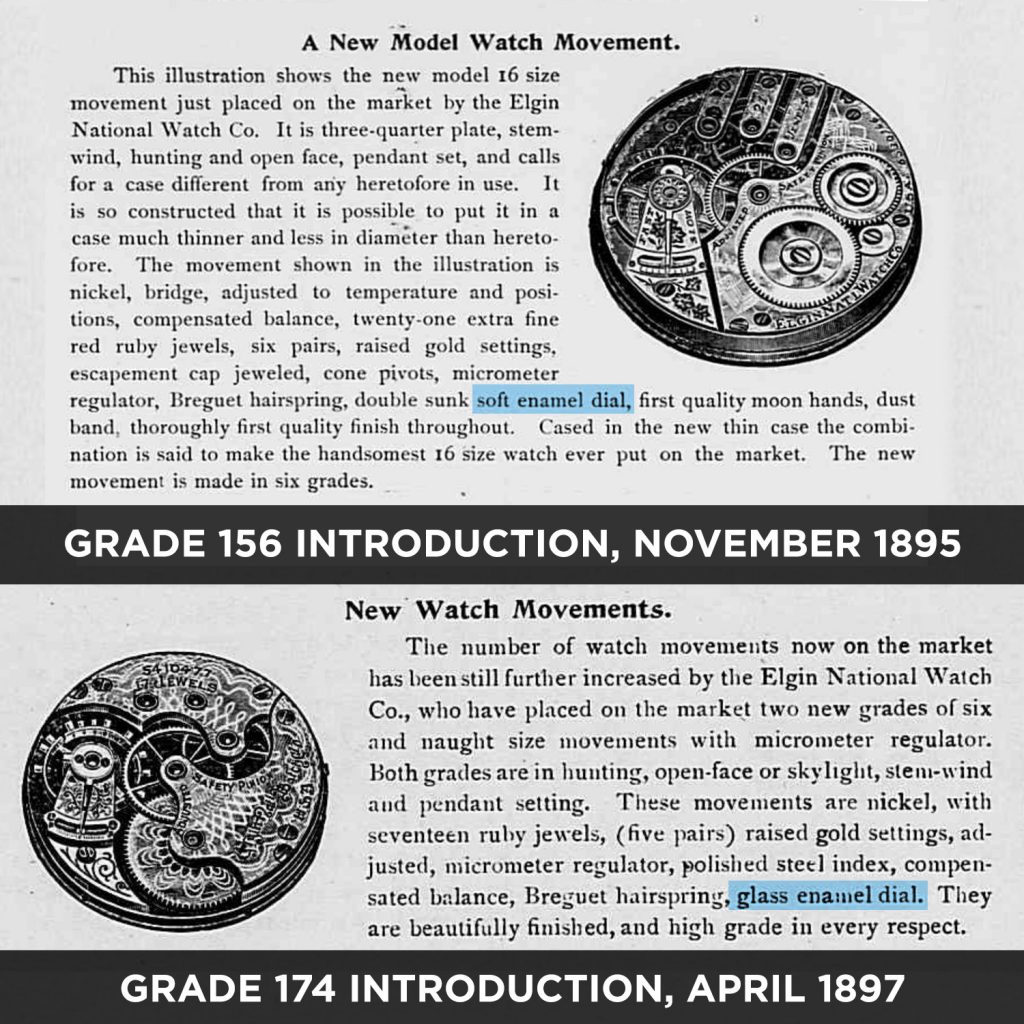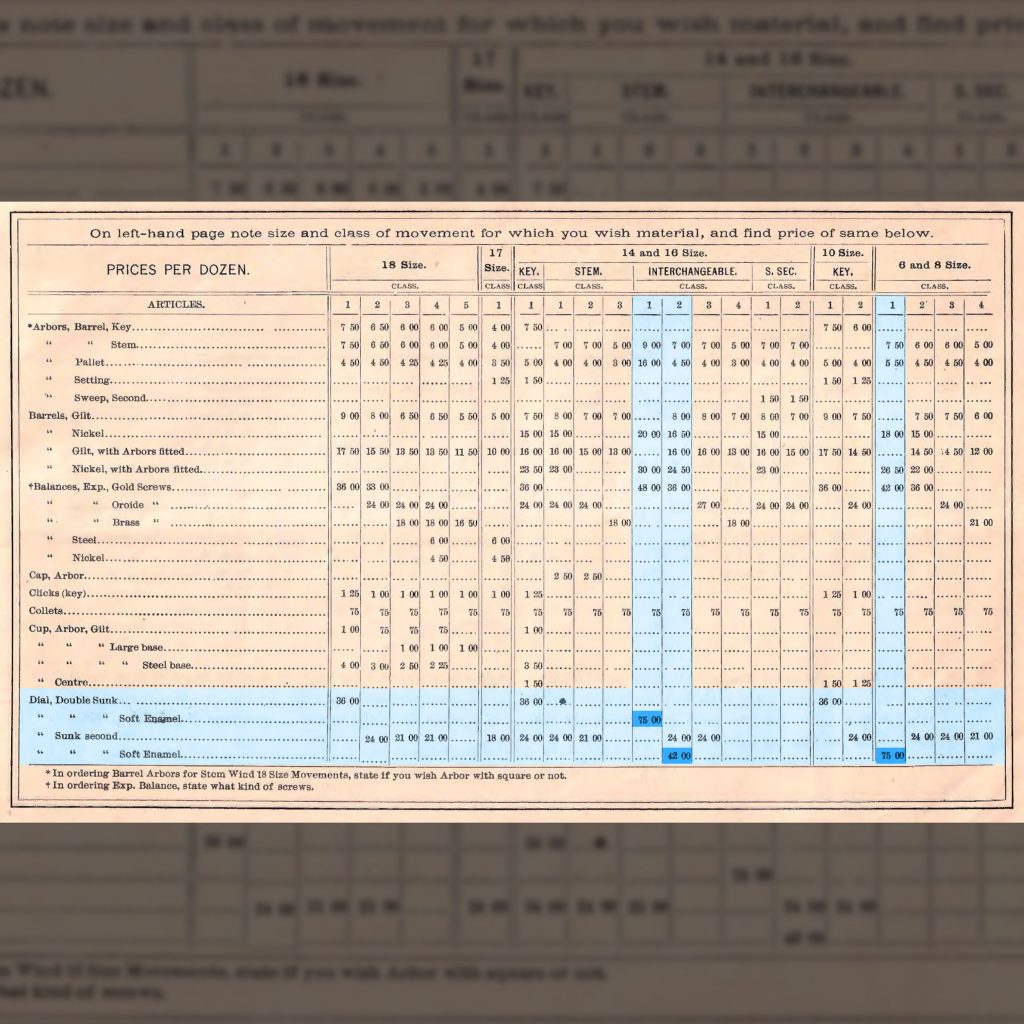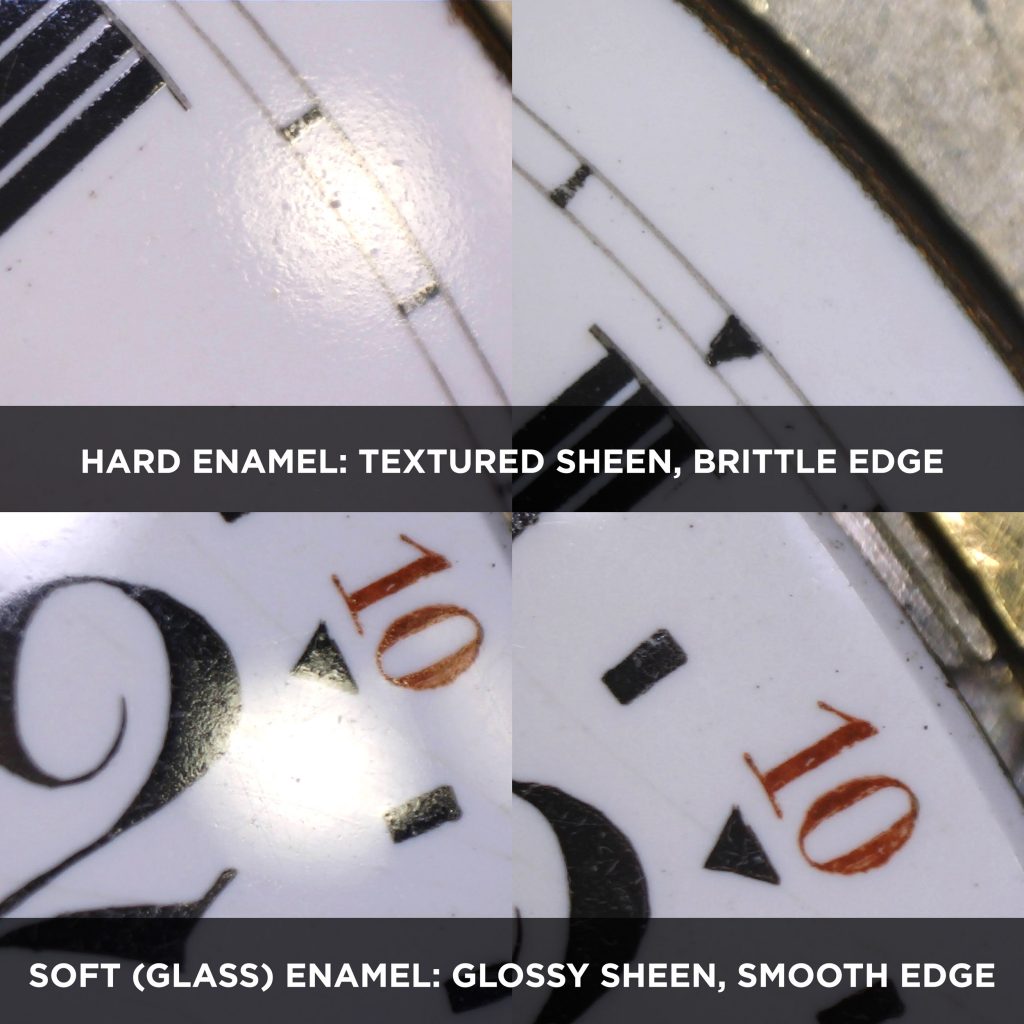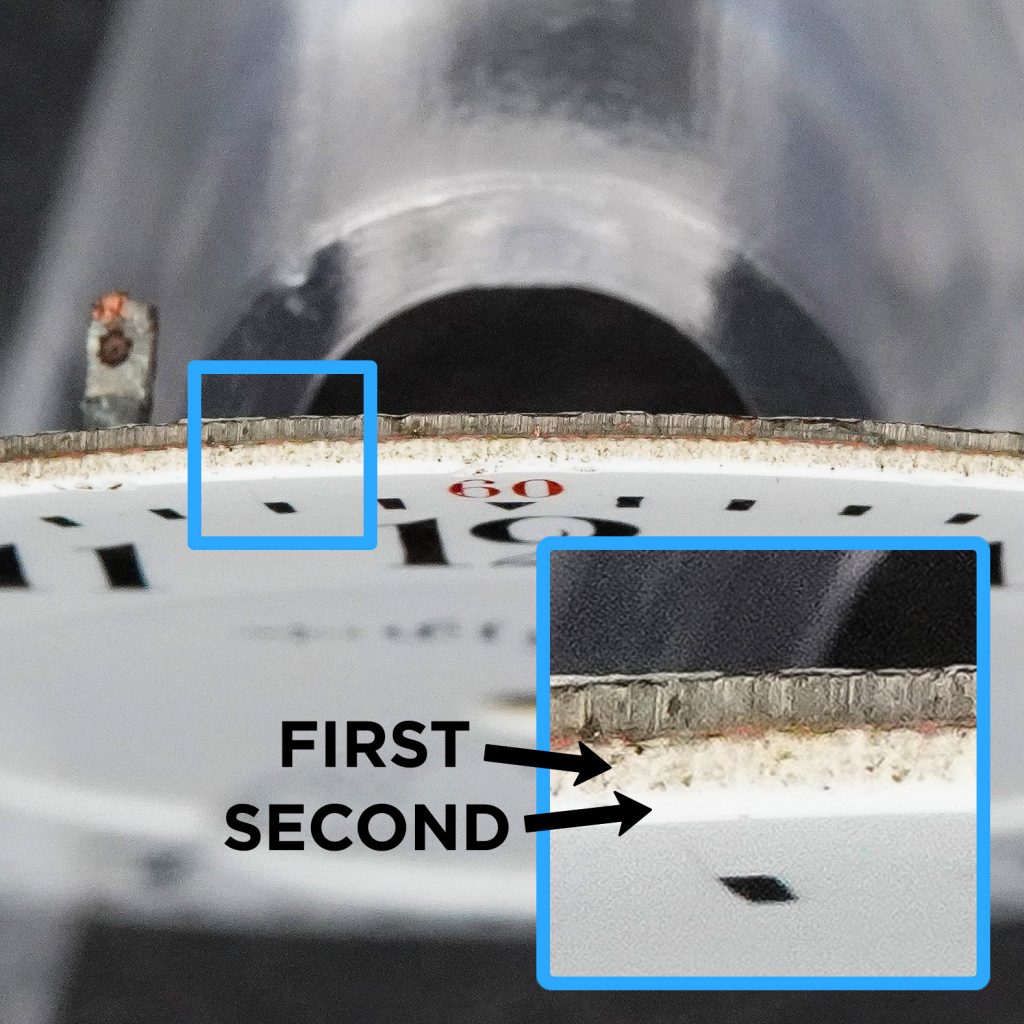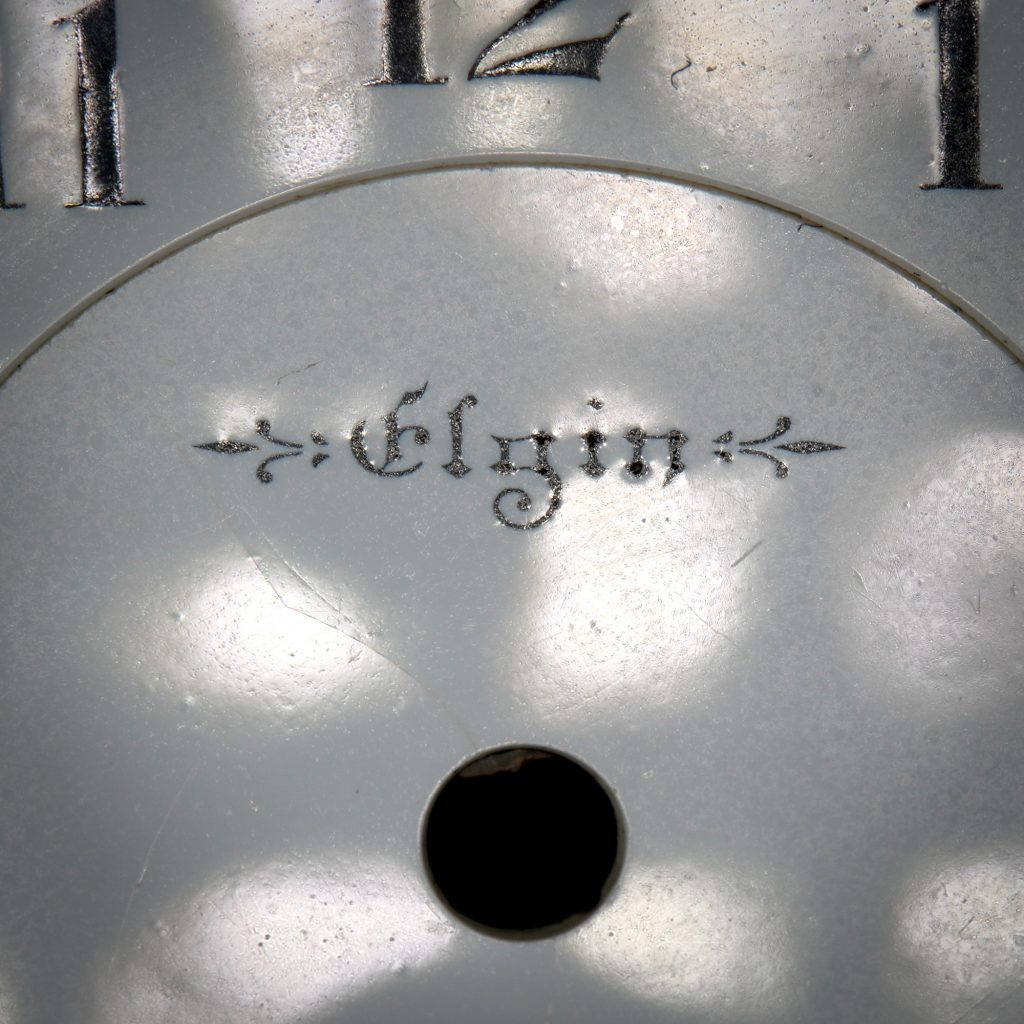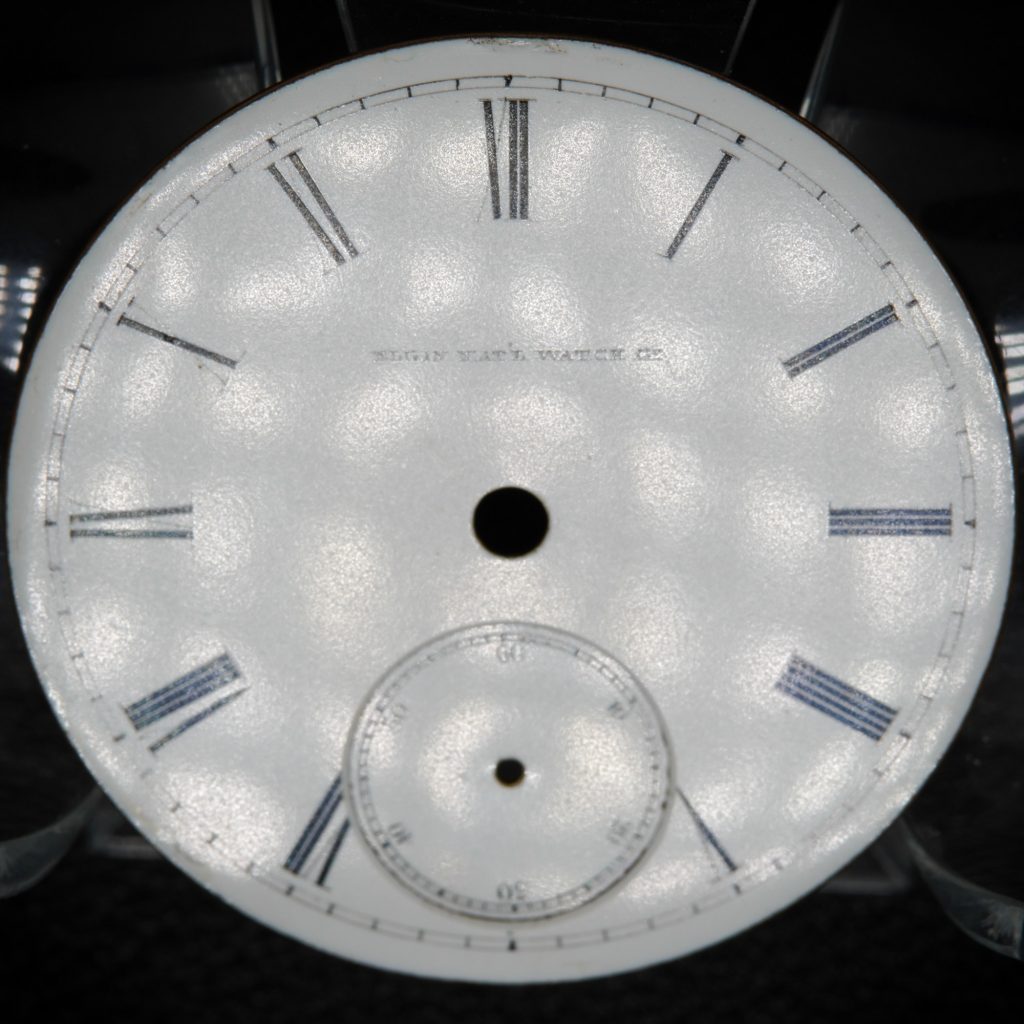Author: Nathan Moore
Pictured: Abraham Bitner’s Patented Paper Watch Dial on a Lancaster Watch Company “Comet” Movement [Courtesy of Heritage Auctions] Before Abraham Bitner used celluloid in the late 1880s as an alternative.
Pictured: Celluloid “French Ivory” Watch Dials from the Keystone Watch Company In seeking an inexpensive alternative to standard enamel dials, the Keystone Watch Company introduced a watch dial manufactured from.
Pictured: 1882 Elgin Material Catalog Showing Hard vs. Soft Enamel Dial Pricing [Catalog Scans Courtesy of Rick Hufnagel] Innovative and novel products commonly demand a premium when first introduced to.
The process of manufacturing Venetian hard enamel dials is very similar to manufacturing English soft glass enamel dials. In both instances, hard enamel is utilized for the backs of the.
Pictured: 18-Size Soft Glass Enamel Dial by the Elgin National Watch Company, showcasing the glossy reflection of direct light English Soft Enamel, commonly known as “Glass Enamel” in the trade,.
Pictured: 18-Size Hard Enamel Dial by the Elgin National Watch Company, showcasing the slightly diffused reflection of direct light When the early American watch industry was sparked in the 1850s,.
